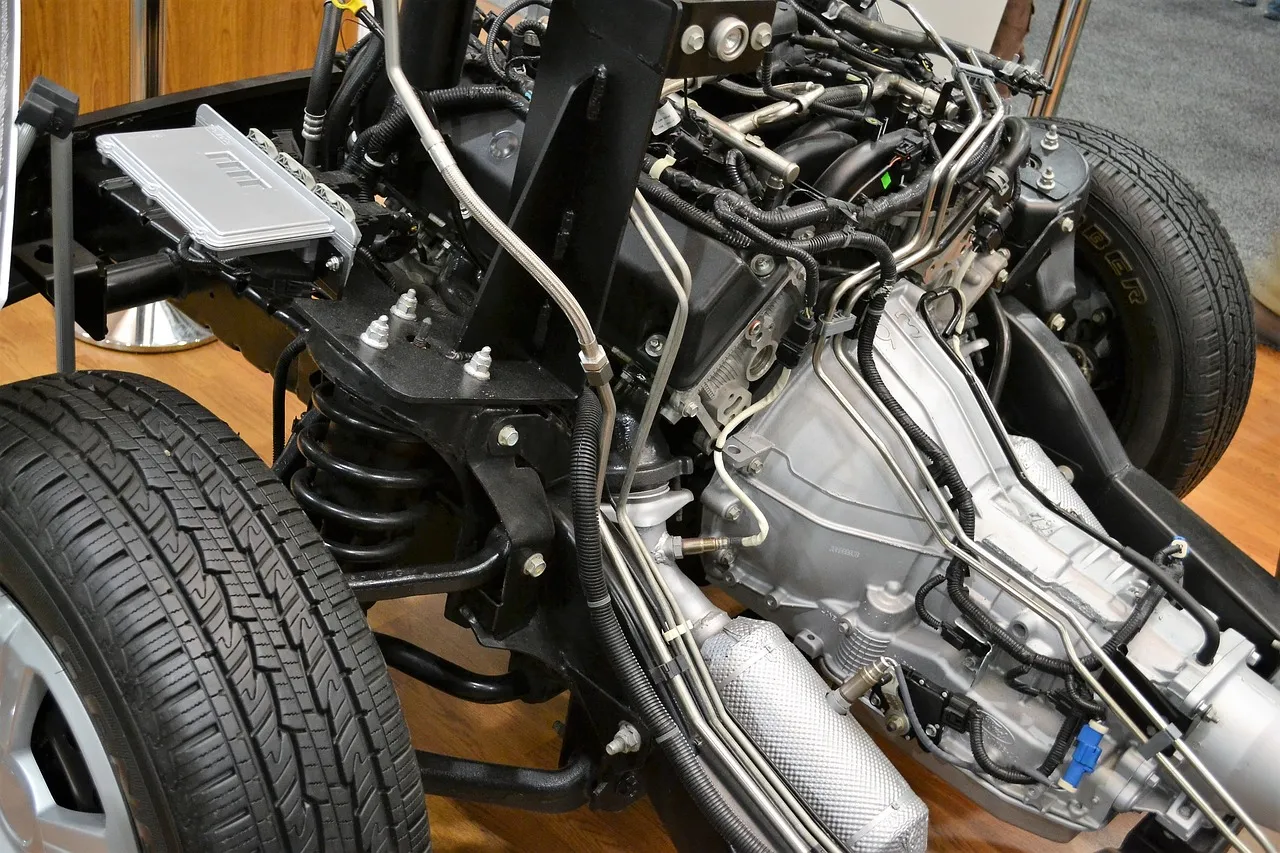Is Straight Piping Legal In California? A Detailed Look At The Laws
If you’re an auto enthusiast in California interested in modifying your vehicle’s exhaust system, you may be wondering – is straight piping legal here? With complex vehicle emissions laws, the answer is not straightforward. This comprehensive guide will examine California’s exhaust noise and emissions regulations to determine the legality of straight pipes.
If you’re short on time, here’s a quick answer to your question: Straight piping is illegal in California for street-driven vehicles. The practice violates both noise limits and emissions control equipment laws that require catalytic converters to remain installed.
What is Straight Piping?
Straight piping refers to the modification of a vehicle’s exhaust system where the traditional muffler is removed, and the exhaust gases are expelled directly from the engine without any restrictions or silencing devices.
This modification is often done to improve performance and to achieve a louder and more aggressive exhaust sound.
When a vehicle is straight-piped, the exhaust gases flow more freely, allowing the engine to expel them more efficiently. This can result in increased horsepower and torque, as well as a more responsive throttle.
Additionally, the absence of a muffler can give the vehicle a distinct and attention-grabbing exhaust note.
It is important to note that straight piping is considered a modification and may not be legal in all jurisdictions. Each state or country has its own laws and regulations regarding vehicle modifications, including exhaust systems.
Therefore, it is crucial for car enthusiasts to understand the specific regulations in their area before making any modifications to their vehicle’s exhaust system.
California Laws on Exhaust Noise
When it comes to modifying your vehicle’s exhaust system, it’s important to familiarize yourself with the laws in your state. In California, the laws regarding exhaust noise are quite strict to maintain a peaceful environment and prevent excessive noise pollution.
Violating these laws can result in fines and penalties, so it’s essential to understand what is allowed and what is not.
State Noise Limits
California has specific noise limits that apply to all motor vehicles. According to the California Vehicle Code Section 27150-27159, the maximum allowable noise level for most vehicles is 95 decibels (dB) when measured from a distance of 50 feet.
However, for motorcycles, the maximum noise level is 80 dB when measured at a distance of 50 feet. These limits are in place to ensure that vehicles on the road do not create excessive noise that can disturb residents and contribute to noise pollution.
It’s important to note that these noise limits apply to the overall noise produced by the vehicle, including the exhaust system. If your vehicle’s exhaust system produces noise levels that exceed these limits, it may be considered illegal and can result in a citation.
Local Noise Ordinances
In addition to state noise limits, it’s crucial to be aware of any local noise ordinances that may exist in your specific city or county. Local governments have the authority to establish their own noise regulations, which may be more stringent than the state limits.
For example, cities like Los Angeles and San Francisco have their own noise regulations that may further restrict exhaust noise levels. These local ordinances may have lower noise limits than the state requirements or may impose additional restrictions on certain vehicles or areas.
To ensure compliance with local noise ordinances, it’s recommended to check with your city or county government for specific regulations related to exhaust noise. This information can typically be found on their official websites or by contacting the local authorities responsible for enforcing noise regulations.
Remember, it’s always better to err on the side of caution and comply with the noise limits set forth by both the state and local governments. Not only will you avoid potential fines and penalties, but you’ll also contribute to a quieter and more peaceful environment for everyone.
So, before considering any modifications to your exhaust system, make sure to familiarize yourself with the applicable laws and regulations in your area.
California Emissions Equipment Laws
When it comes to vehicle modifications, one of the most debated topics is whether straight piping is legal in California. Straight piping refers to the practice of removing the catalytic converter and muffler from a vehicle’s exhaust system, allowing for a louder and more aggressive sound.
However, California has strict emissions equipment laws in place to protect air quality and public health.
Federal Clean Air Act
The Federal Clean Air Act, enforced by the Environmental Protection Agency (EPA), sets standards for vehicle emissions across the United States. Under this act, it is illegal to tamper with or modify the emissions control systems of a vehicle, including removing or bypassing the catalytic converter.
Violating this law can result in hefty fines and penalties.
California, being known for its smog issues, has adopted even stricter emissions standards than the federal requirements. The state has its own set of laws and regulations that all vehicles must comply with.
State Smog Check Program
The California Air Resources Board (CARB) administers the state’s Smog Check Program, which is designed to reduce vehicle emissions and improve air quality. The program requires regular inspections and emissions testing for most vehicles in California.
As part of the Smog Check Program, vehicles must pass an emissions test, which includes a visual inspection of the vehicle’s emissions equipment, including the catalytic converter. If a vehicle is found to have had its emissions equipment tampered with or modified, it will fail the inspection.
It’s important to note that removing or bypassing the catalytic converter is illegal in California. The catalytic converter plays a crucial role in reducing harmful emissions from the vehicle’s exhaust, and removing it not only violates the law but also contributes to air pollution.
To ensure compliance with California’s emissions equipment laws, it is recommended to consult with a qualified mechanic or automotive specialist who is familiar with the state’s regulations. They can provide guidance on legal modifications that can improve performance without violating the law.
For more information on California’s emissions equipment laws and the Smog Check Program, you can visit the official website of the California Air Resources Board at www.arb.ca.gov.
Summary of Legality
Straight piping refers to the practice of removing or bypassing the muffler and other exhaust system components to create a louder exhaust sound. In California, the laws regarding straight piping are quite strict.
It is important to understand the legal implications before making any modifications to your vehicle’s exhaust system.
California Vehicle Code
The California Vehicle Code (CVC) is the primary source of legislation governing vehicle modifications in the state. According to CVC Section 27150, all vehicles must be equipped with an adequate muffler that prevents excessive or unusual noise.
This means that removing the muffler or installing a straight pipe is generally considered illegal in California.
Additionally, CVC Section 27151 prohibits any modifications that increase the noise emitted by a vehicle above the maximum allowable levels specified by the state. This includes modifications such as straight piping, which often result in a significantly louder exhaust sound.
Penalties for Violation
Violating the laws regarding vehicle exhaust systems in California can lead to various penalties. This can include fines, vehicle impoundment, and even suspension of your driver’s license. The exact penalties depend on the severity of the violation and any prior offenses.
It is worth noting that law enforcement officers in California have the authority to issue citations for excessive noise even without a decibel meter. If they determine that your vehicle’s exhaust sound is louder than what is considered acceptable, you can still be cited for violating the law.
Exceptions
While straight piping is generally illegal in California, there are a few exceptions to the rule. According to CVC Section 27151.5, vehicles designed and manufactured for racing purposes may be exempt from the requirements of having a muffler.
However, this exemption only applies when such vehicles are being operated on private property or racetracks.
It is also worth mentioning that some aftermarket exhaust systems may be legal in California as long as they are certified by the California Air Resources Board (CARB). These systems have undergone testing to ensure they meet the state’s emissions and noise regulations.
It is always recommended to consult with a knowledgeable professional or legal expert before making any modifications to your vehicle’s exhaust system in California. Violating the state’s laws can result in serious consequences, so it’s important to understand the regulations and potential penalties.
Consequences of Violating the Law
When it comes to straight piping in California, violating the law can have serious consequences. It’s important to understand the potential repercussions before deciding to modify your vehicle’s exhaust system.
Fix-It Tickets
One consequence of straight piping that many drivers face is receiving a fix-it ticket. A fix-it ticket is a notice from law enforcement that requires you to correct a specific violation. In the case of straight piping, the ticket will likely require you to reinstall a proper muffler or catalytic converter to bring your vehicle into compliance with California’s emissions laws.
Failure to fix the violation within the given timeframe can result in additional penalties.
Fines
Another consequence of straight piping is the potential for fines. If you are caught driving a vehicle with an illegal exhaust system, you may be issued a citation and be required to pay a fine. The amount of the fine can vary depending on the specific violation and the discretion of the issuing officer.
It’s important to note that fines for exhaust violations in California can range from a few hundred dollars to over a thousand dollars, so it’s not a risk worth taking lightly.
Impounded Vehicles
In some cases, driving a vehicle with an illegal exhaust system can result in the impoundment of your vehicle. Law enforcement officers have the authority to impound a vehicle if they believe it is being operated in violation of the law.
Having your vehicle impounded can be a major inconvenience, as it often requires paying impound fees and going through a lengthy process to retrieve your vehicle.
It’s crucial to understand that these consequences can vary depending on the specific circumstances and the discretion of law enforcement officers. To ensure compliance with the law, it’s best to consult the California Vehicle Code or seek legal advice if you have any doubts about the legality of your vehicle modifications.
Conclusion
In summary, straight piping your vehicle in California is illegal due to state exhaust noise limits and emissions control equipment laws. Drivers with illegally modified exhausts risk fix-it tickets, fines, and even impounded vehicles if caught. While some enthusiasts are willing to take the risk, most drivers should steer clear of straight pipes to remain street legal in California.








